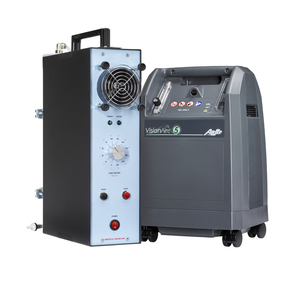
 |
Mark Sennett
Managing Editor |
 |
Kelly Rose
Editor |
| Home> | Breathing Safely | >Breathing Air | >Use Ozone to eliminate airborne particles |
Use Ozone to eliminate airborne particles
14 December 2020
THE EPA classifies indoor air quality as the number one air pollution problem today and notes that indoor air is 2 to 5 times, and as high as 100 times, more polluted than outdoor air.

In fact, the WHO (World Health Organization) has found that 92% of the world’s population breathes chemical contaminated air, and drinking water is chemically contaminated in almost all countries across the world. Air and water pollution produce 12.6 million deaths every year, 1.4 million of these deaths are in Europe.
Using Ozone to Decontaminate Air
Indoor Air Quality
Ozone is used for biological and chemical decontamination as well as deodorisation of air, contactless cleaning of surfaces and penetrating of fabrics and hard to reach areas.
Ozone can decontaminate and deodorize an entire room more effectively than manual cleaning alone. Ozone is a gas which allows it to dissipate into all corners of a room and penetrate deep into porous materials to decontaminate them from inside including things like curtains, carpets, pillows, wood, books and more.
While extremely powerful, the waste product of ozone is oxygen. “Ozone is one of the friendliest and cleanest ways of deactivating viruses and killing most any pathogen,” says M.G. Finn, chair of the Georgia Institute of Technology’s School of Chemistry and Biochemistry. “It does not leave a residue, it’s easy to generate from atmospheric air, and it’s easy to use from an equipment perspective.
Proven by the Nara Medical University, ozone has been shown to be an effective tool against the COVID-19 virus by eliminating it from the air in enclosed spaces such as in schools, hotels, restaurants and more.
What is ozone?
Ozone is highly effective at removing bacteria, fungi, viruses and odours from enclosed spaces. The ozone molecule is made up of three oxygen atoms (O3). Oxygen atoms hate being by themselves, that’s why you always find them in pairs (O2). Oxygen atoms also don’t like being tripled up into ozone (O3), but it’s better than being alone. The extra oxygen atom is ready to leave at the first opportunity it gets. This will happen by itself naturally over time or when it meets a pathogen. Extra Oxygen atoms attaching themselves to pathogens causes them to break down.
Justrite Ozone Generators
Justrite’s range of Ozone Generators focus on key features in relation to safety to the operator and the environment, and reliability with a fully automated process that ensures recorded and certifiable treatments.
Safe – The entire ozone generator process is monitored and recorded, and operational functions can also be managed remotely using an optional remote control. Once the natural conversion of ozone into oxygen is complete, a controller indicates when the rooms can be accessed. The result is a certifiably decontaminated space.
All of Justrite’s ozone generators are equipped with an automatic timer which will switch the generator off after the process is complete. The oxygen filters or concentrators, depending on the model you choose, ensure no air impurities can move through the machine.
Easy to use – Justrite Ozone Generators are very easy to use. Simply estimate the size of the room you wish to decontaminate in cubic meters (m3), set the dial to the correct output, press the start button and then leave the room and let the machine get to work.
Reliable – To ensure a reliable cleaning result every time, our ozone generators are set to decontaminate according to the international protocols for ozone. We use high-quality components that have long lifecycles. This gives us the confidence to provide a 3-year guarantee on all our Ozone Generators.
If you are interested in Justrite’s Ozone Generators please check out our website at https://eu.justrite.com/v-defence or contact us directly at [email protected].

























